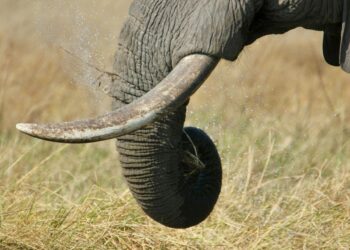Bottlenose dolphins also have a right-side bias, potentially even stronger than that of humans.

Image via Wikimedia.
Almost all of us are right-handed, and bottlenose dolphins seem to share our preference. A 6-year study found that common bottlenose dolphins favor their right eye when foraging for food on the ocean floor. Most species of animals tend to favor one side of the body over the other. Kangaroos, cockatoos, orangutans, even horses show a general preference for the left side.
Righties
Handedness or laterality is believed to arise from the two-lobe structure of our brain. It’s estimated that for around 90% of us, our left brain hemisphere (this controls our right side) is in charge of processing language, making it the stronger and more dominant of the two. The right hemisphere generally handles visuospatial processing. “More than 95% of right-handed humans process language predominantly in the left hemisphere, while only approximately 70% of left-handed people [do the same],” the paper explains.
To get a better understanding of laterality in the common bottlenose dolphin (Tursiops truncatus), the team worked with a group of just under 30 individuals in The Bahamas. The team recorded the sounds and movements of these dolphins, especially as they were “crater feeding” — going nose-down to inspect the sand visually and with their echolocation.
Out of 709 pinwheel spins performed by several dozen dolphins, 705 steered were to the left, with the right eye used to look for a meal. The team says this indicates that the dolphins’ left hemisphere does most processing of prey-related sensory information, either of a visual nature or also involving echolocation.
The team notes that all four of the spins to the right were performed by the same individual — possibly an atypical dolphin whose brain is lateralized differently to the others. However, they remark that this dolphin had “an abnormally shaped right pectoral fin”.

Image credits Daisy Kaplan et al., 2019, R. Soc. open sci.
Understanding how other brain regions specialize in various tasks in other species can help us learn more about how our brains work, and how they got to work like they do. In the case of dolphins, the team notes, anatomical asymmetry in the skull could also play a role in their lateral preference.
“Advances in non-invasive brain imaging techniques hold the potential to further explore the link between behavioural laterality and hemispheric specialisation and sensory and cognitive processing,” the researchers conclude.
This paper “Behavioural laterality in foraging bottlenose dolphins (Tursiops truncatus)” has been published in the journal Royal Society Open Science.






